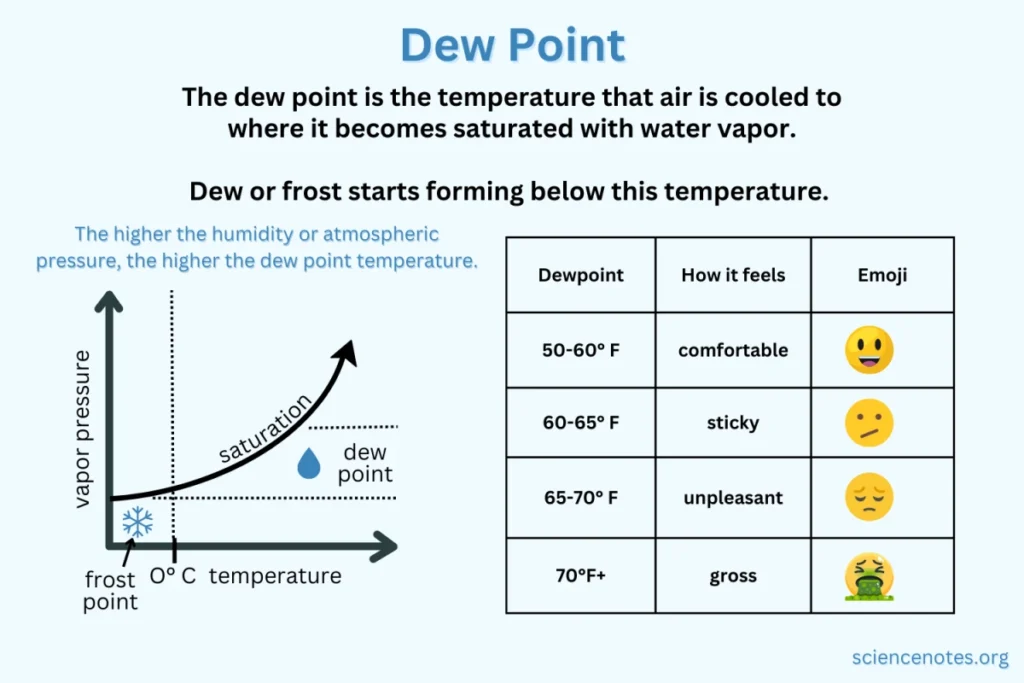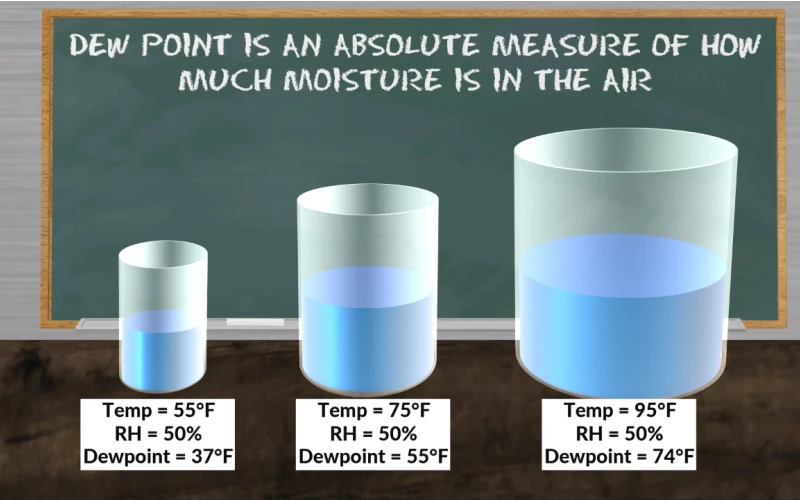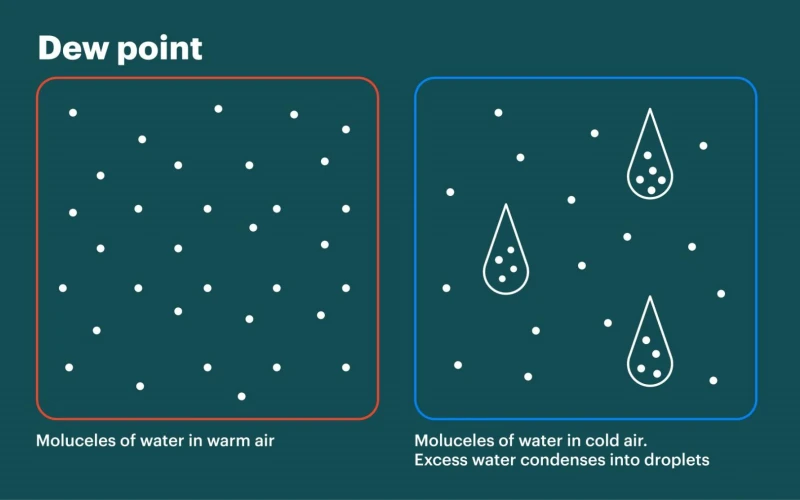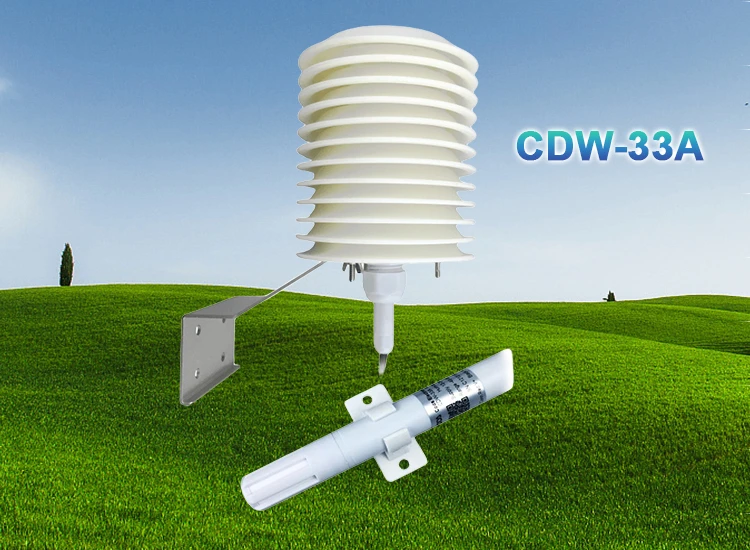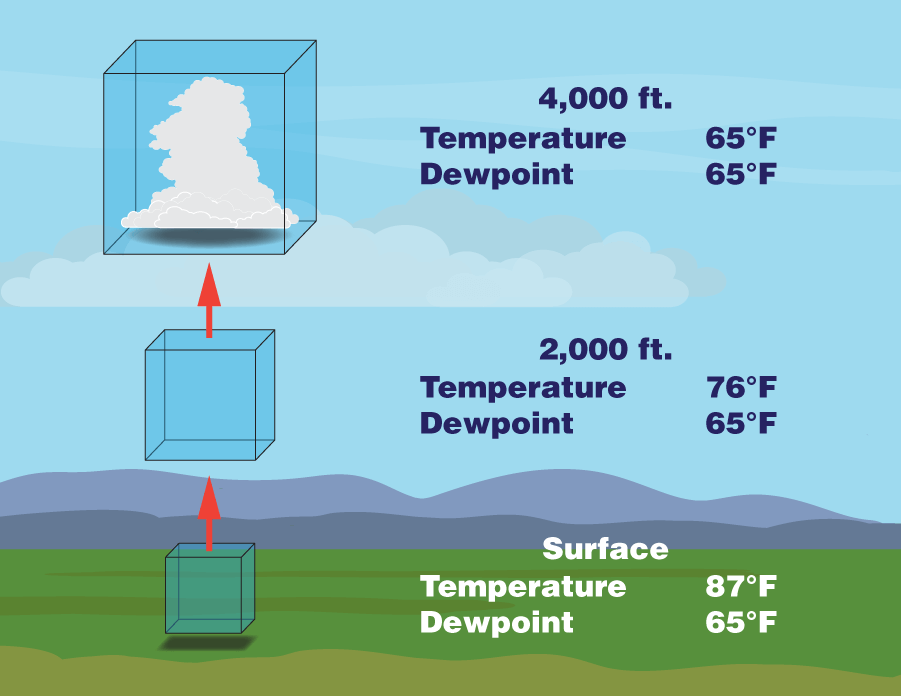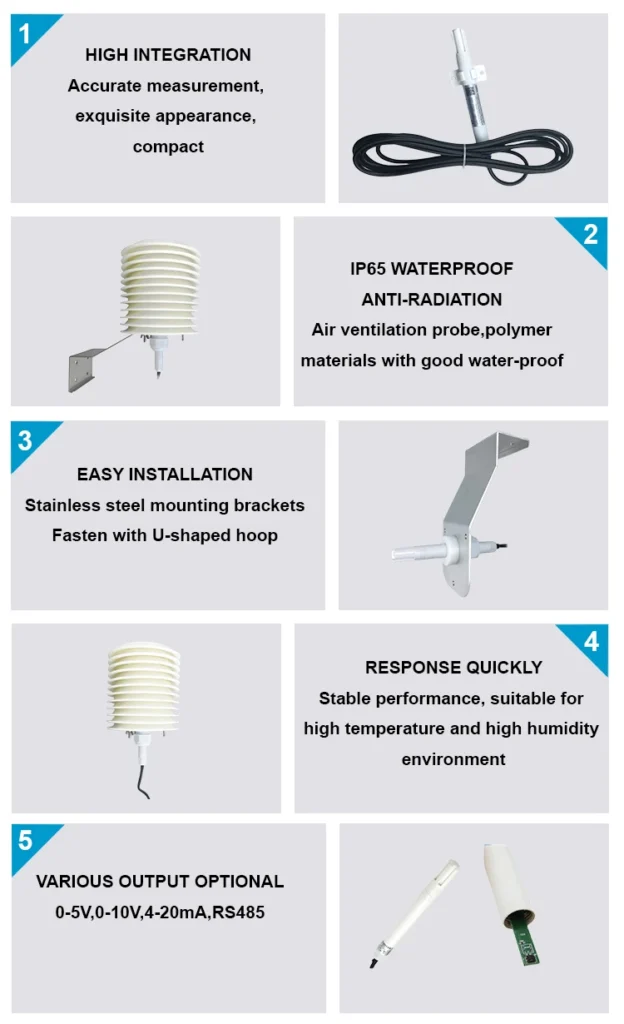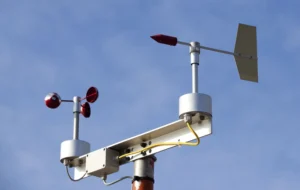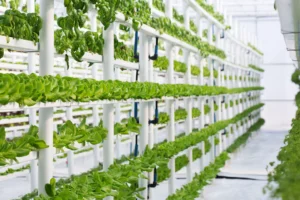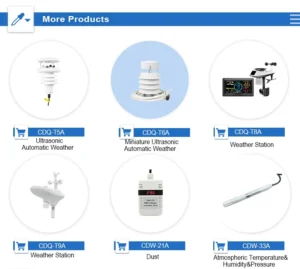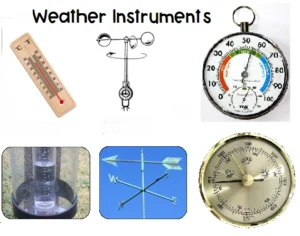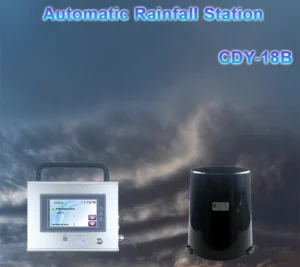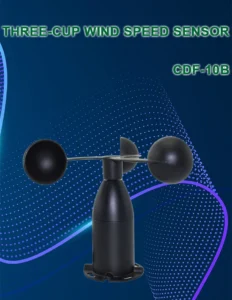Understanding Comfort Dew Point and Measuring It |what is the dewpoint
The comfort dew point relates to the amount of water vapor in the air. In dry conditions with little water vapor, a lower dew point is important. This means that surfaces must be much cooler than the air for condensation to occur.
In humid conditions with a lot of water vapor, the dew point goes up. Condensation forms on surfaces that are cooler than the air around them.
what is the dewpoint?
In meteorology, the dew point is the temperature at which air holds the most water vapor. This happens at a steady pressure and leads to condensation. At this temperature, water vapor can create fog in the air or dew on surfaces.
Condensation occurs often in our daily lives. For example, in autumn or winter, the air gets colder. When this happens, water vapor in the air becomes liquid. This forms dew on the grass and frost on windows.
The process occurs because lower temperatures make unsaturated mass of water vapor reach saturation. When the temperature is above 0°C, dew forms. When it is below 0°C, called the frost point can appear.
The dew point is a key part of weather. It helps us predict things like dew, frost, fog, and rain. It also shows low night temperatures and can be linked to tornadoes. For weather fans and experts, it is a key measure of humidity of 100 in the air.
What Influences Dew Point?
Humidity is important for finding the dew point. It can be divided into two types:
– **Absolute Humidity**: This measures the amount of water vapor in a cubic meter of air (g/m³).
– **Relative Humidity**: This shows how much water vapor is in the air.
– It is expressed as a percentage.
This percentage shows how much water vapor is in the air compared to the most it can hold at a certain temperature.
The dew point is directly related to relative humidity:
When the humidity is high, there is more water vapor in the air. This makes the dew point closer to the current air temperature.
When the air has low humidity, it has less water vapor. The dew point is much lower than the temperature around it.
For example, when the air hits 100% relative humidity, it is full of moisture. At this point, the air temperature and the dew point are the same. In dry air, a big gap between the temperature and the dew point means there is little amount of moisture. This makes condensation less likely.
Key Applications of Dew Point
The dew point is not only used to study daily weather patterns. It also plays an important role in aviation and other specialized fields.
– **Aviation**:
Pilots use dew point information to see if there is a risk of carburetor icing.
– They also use it to predict when fog might form.
– It also helps them estimate how high cumuliform cloud bases are.
– **Predicting Condensation**: A smaller gap between air temperature and dew point means higher humidity. This makes condensation more likely.
– **Influence of Atmospheric Pressure on Dew Point**: Atmospheric pressure affects the dew point. When pressure goes up, you need less water vapor in the air to prevent condensation.
For instance:
– **New York City** is 33 feet above sea level.
– **Denver** is 5,280 feet above sea level.
– New York City usually has higher air pressure than Denver.
This is because New York City is at a lower height.
If both cities have the same dew point and temperature, Denver’s air holds more water. This is due to its lower air pressure.
Knowing this helps us see how changes in height and pressure affect humidity and condensation.
**Dew Point vs Temperature**
Temperature is very important in how water vapor acts in the air. When pressure stays the same, warm air can hold much more moisture than cold air.
Higher temperatures make water molecules move faster. When it gets hotter, liquid water turns into vapor more easily. So, when relative humidity is constant, the dew point in warm places will be higher dew point than in cool ones.
In winter, when you move from a cold outdoor area to a warm indoor space with glasses, fog can form on the lenses. This occurs because the saturated water vapor pressure goes up as the temperature rises.
If the glasses are colder than the dew point, water will form on them. This creates small droplets, like dew. When the air is very moist, condensation can happen on any surface that is as cool as the air.
**What Is a Comfortable Dew Point?**
The dew point affects our comfort levels, especially in hot summer weather. Our bodies cool down by sweating. When sweat dries, it helps remove heat.
This process works better when the air is not very humid. In very humid conditions, the air is full of moisture. This makes it hard for sweat to dry.
Even if we sweat a lot, our bodies find it hard to cool down. This can lead to discomfort.
Moving air, from natural winds or fans, helps sweat dry. It does this by replacing warm air around us with cooler air. This helps us feel cooler. But if sweat does not evaporate well because of high humidity, we feel uncomfortable.
Both high and low dew points can make us uncomfortable. Most people feel comfortable with a dew point of 50–60°F. If the dew point drops too low, it can lead to dry skin and nosebleeds. In this case, a humidifier may help.
On the other hand, when dew points go above 61°F, we feel clammy and may have trouble breathing. In this case, we need ventilation systems. They help reduce moisture and make things more comfortable.
**Examples of Dew Point Relevance**
The dew point is an important measurement. It helps us understand the air and how it affects our daily lives.
**Why Is Dew Point Important?**
The dew point shows how much moisture is in the air. Weather experts use it to predict the weather and assess risks.
When the dew point gets close to or below 0°C, freezing conditions can occur. This can cause problems for transportation, farming, aviation, and other industries. Accurate and timely forecasts are important. They help prevent and reduce disasters.
In industrial settings, it is very important to control the dew point accurately. Processes like drying, refrigeration, and gas treatment depend on precise readings. This helps avoid corrosion and equipment failure. For example:
In clean rooms for making semiconductors or lithium batteries, it is important to watch the dew point. This helps maintain the best conditions for manufacturing.
In farming, it is important to track the dew point to manage crops. It helps farmers decide when to water. This prevents crops from getting stressed due to lack of moisture.
Also, a high dew point can shorten the life of electronic parts. This happens because the moist air can cause electrical discharges or damage the components.
**How Is Dew Point Measured?**
Measuring dew point helps us know how much water vapor is in the air. This information is useful in many areas. These include checking the environment, ensuring building safety, studying weather, and managing industrial processes. There are four main ways to measure dew point:
1. **Chilled-Mirror Hygrometry**
A cooling system gathers saturated with water vapor on a shiny surface. It keeps going until the temperature hits the dew point.
2. **Capacitive Sensors**
These sensors measure changes in electrical properties when humidity levels change.
3. **Psychrometers**
They use two thermometers: one is wet and one is dry. They measure humidity and find the dew point.
4. **Resistive Sensors**
Devices that detect changes in resistance due to moisture levels.
Methods to Determine Dew Point Value
1. Using Calculation Formulas
How is the dew point calculated? You can find the dew point temperature using math formulas. One common formula is the **Magnus-Tetens equation**.
**Td = (237.3 * (ln(RH/100) + (17.27 * Tc) / (237.3 + Tc))) / (17.27 – ln(RH/100) – (17.27 * Tc) / (237.3 + Tc))**
– **Td**: Dew point temperature (°C) degrees celsius
– **RH**: Relative humidity (%)
– **Tc**: Current temperature (°C)
The formula is clear in theory. However, measuring relative humidity in real life can be hard. This makes this method not always practical in some cases.
2. Using Sensors
A **dew point sensor** is a special device that measures dew point values accurately. This method is simple and efficient for getting readings. However, the quality of sensors on the market can vary a lot. This means you need to choose carefully.
If you want reliable options, **CODA** is a trusted manufacturer. They have 17 years of experience in making weather sensors. They provide dependable solutions, so they are a brand to consider.
**Types of Sensors Available:**
– Dew point sensors
– Wall-mounted dew point sensors
3. Referencing Open Source Data
Free weather data from weather bureaus or environmental groups often includes dew point information. For example, the **U.S. Weather Bureau** provides open-source weather data for free.
**Advantages:**
– Free and easily accessible
**Limitations:**
Data may not be specific enough for your needs. You may need dew point data for a specific farm. However, the provider might only give information at the state level.
4. Self-Observation
If you need high precision, you can set up your own weather station. Just buy sensors like:
– Pressure sensors
– Temperature sensors
– Humidity sensors
With these devices, you can gather real-time data and find dew point values. You can do this by hand or use built-in systems. This solution has some upfront costs and requires technical skills. However, it offers accuracy that meets your needs.
